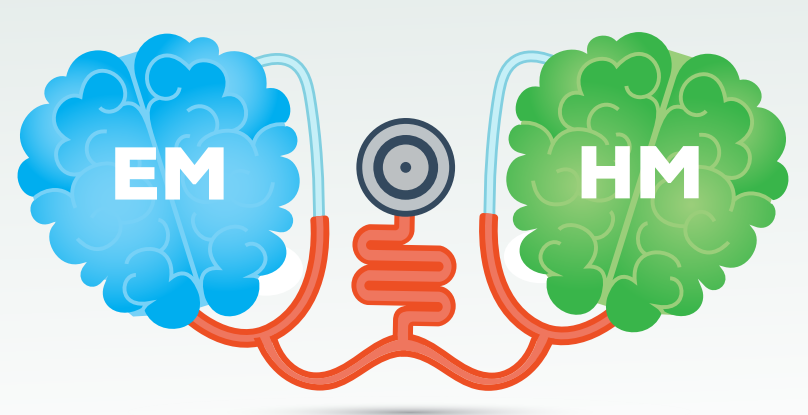by Jim Burnette, President/CEO, HospitalMD
In this article:
- What is the REAL primary cause of lost revenue for rural hospitals?
- What vital patient treatment concept is alien to most medical training today?
- How can physicans make an impact on outmigration?
A service area population of 20,000 produces approximately 2,600 admissions per year.
At some point, you probably accepted the fact that you still do not keep as many acute inpatients in your hospital as you think you should. It is a mystery. When there is no good answer to a question, we rationalize. We may even believe a myth. You may not know how many patients you could or should keep, but your financial statements keep telling you there is a problem. One of the causes is not that there are fewer acute inpatients today than 25 years ago. The Centers for Disease (CDC) has conducted the longest running study of health utilization of any organization in existence, and this rate has remained about 13% of the population for the last 10 years. For example, a service area population of 20,000 produces approximately 2,600 admissions per year. You can do the math yourself for your area.
There was a time when the local family practice doctor worked 16 hours a day or more, admitted all of his or her patients directly, and kept the hospital full. The “clinic” patients we see in the ER today previously went to the doctor’s office, not the ER. And the local family doctors often “covered” the ER where they saw only truly emergent patients. Thus, the primary care physician (PCP) was the “specialist” responsible for all but emergent patients. There was continuity. In some small communities, the ER was not covered continuously. However, the local doctor could go next door to the hospital to see patients as they arrived because there were only a few.
The limited role of an ER doctor to identify an acute admission prospect, or to spend the time to discuss the case with the PCP, can result in a transfer.
A PRIMARY CAUSE OF LOST REVENUE
A high degree of medical decision “alignment” is required in order to make the correct medical necessity decision.
Today, most PCPs do not admit patients directly, and if they do, certainly not many, and most PCPs do not work in the local ER. Smaller community hospitals (SCHs) have adopted the specialty model used in the larger, urban hospitals. With this model, the ER specialty doctor works exclusively in the ER and attends only ER patients. The PCP depends on the ER doctors to refer admission prospects to them. Here, at the convergence of this urban practice model and the disruptive economics of reimbursement, lies the primary cause of the loss of revenue and fragile SCHs.
The urban hospital is large and can support a robust scope of services. Patients arriving at these ERs are almost always local admissions. The urban hospital receives transfers, but they do not initiate transfers. It is not within the scope of the ER “specialty” to fully determine the appropriateness of acute admissions.
The phrase, “Treat ’em, and street ’em” describes the focus of the ER specialty. The ER physician does not know these patients. The patient is stabilized, and if the physician suspects a need to admit, the prospect is referred to a PCP, a specialist, or a Hospitalist
The limited role of an ER doctor to identify an acute admission prospect, or to spend the time to discuss the case with the PCP, can result in a transfer. This limitation can occur for many reasons. As this discontinuity progresses, the admission decision can become a unilateral decision of the ER doctor. This is seldom intentional, and it is always subtle. It remains an unintended consequence of SCHs adopting a practice model that works well in a larger, urban hospital but doesn’t in a SCH.
You can see where this is going. A high degree of medical decision “alignment” is required in order to make the correct medical necessity decision. This alignment must occur at the interface between the ER doctor and the PCP. It is here that the decision to admit or transfer occurs. It is at this point in time that the ER doctor needs to be able to think like a PCP and not only like an ER doctor. In the absence of the ER physician being paid to make this judgment, this decision may be made poorly.
AN ER DOCTOR’S PERSPECTIVE
Every time I introduce myself to a patient, I never know which direction things are going to head.
Joe Lex, MD, Clinical Professor of Emergency Medicine, Temple University, described the role of the ER doctor in an article he wrote this Summer as he reflected on his retirement.
“Why are we different? While other doctors dwell on the question, ‘What does this patient have? (i.e., What’s the diagnosis?’), emergency physicians are constantly thinking ‘What does this patient need? Now? In 5 minutes? Does this involve a different way of thinking?’
The concept of seeing undifferentiated patients with symptoms, not diagnoses, is alien to many of our medical colleagues. Yes, we do it on a daily basis, many times during a shift. Every time I introduce myself to a patient, I never know which direction things are going to head.
I will ask you (the patient) many, questions. I will do the best I can to ask the right questions in the right order so that I come to a correct decision. I want you to tell me the story. I hope for both of our sakes you have a plain, obvious emergency with a high signal-to-noise ratio. If, on the other hand, your problem has a lot of background noise, I am more likely to be led down the wrong path and come to the wrong conclusion.
Emergency physicians are notorious for thinking quickly and making early decisions based on minimal information. Emergency medicine really annoys a lot of the other specialists.
Now, how can I help you (the patient) today?”
A FUNDAMENTAL QUESTION
By now you have reached your own conclusion. No one needs to convince you of this dysfunction. But this takes us back to the fundamental question of what to do. As we have seen, the ER physician and the PCP can easily (if unintended) contribute to outmigration. With no process designed specifically to correct this misalignment, outmigration will never reverse itself naturally. It is at this point of patient “hand off” between the ER doctor and the local PCP that HospitalMD teaches its doctors to “think as two, but act as one”. We are happy to discuss the solutions to address your unique challenges. I would also like to hear from you with any ideas or comments you have that we can address in future issues of insight™. Call us at (877) 881-8783 or email us at insight@HospitalMD.com. —Jim Burnette



